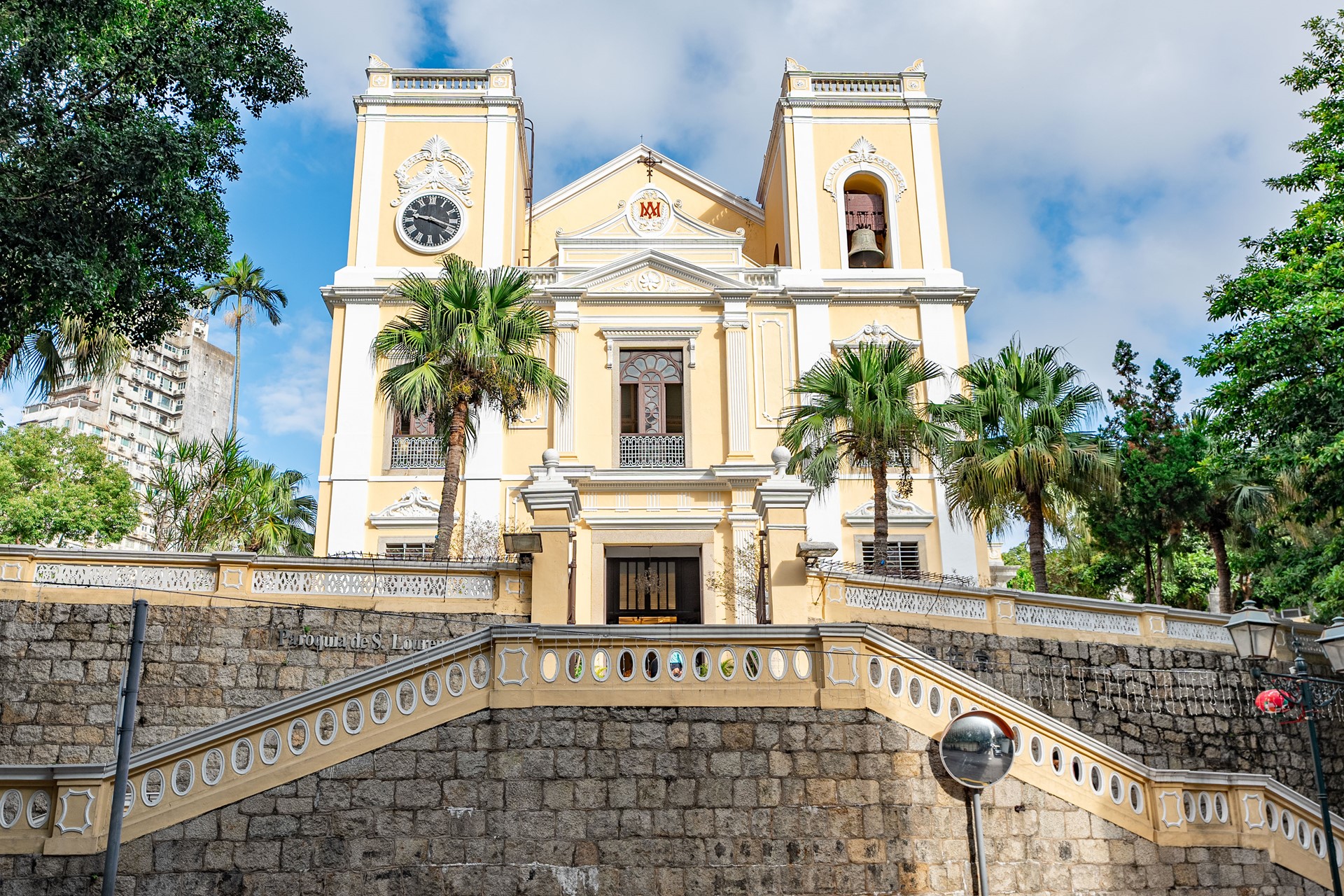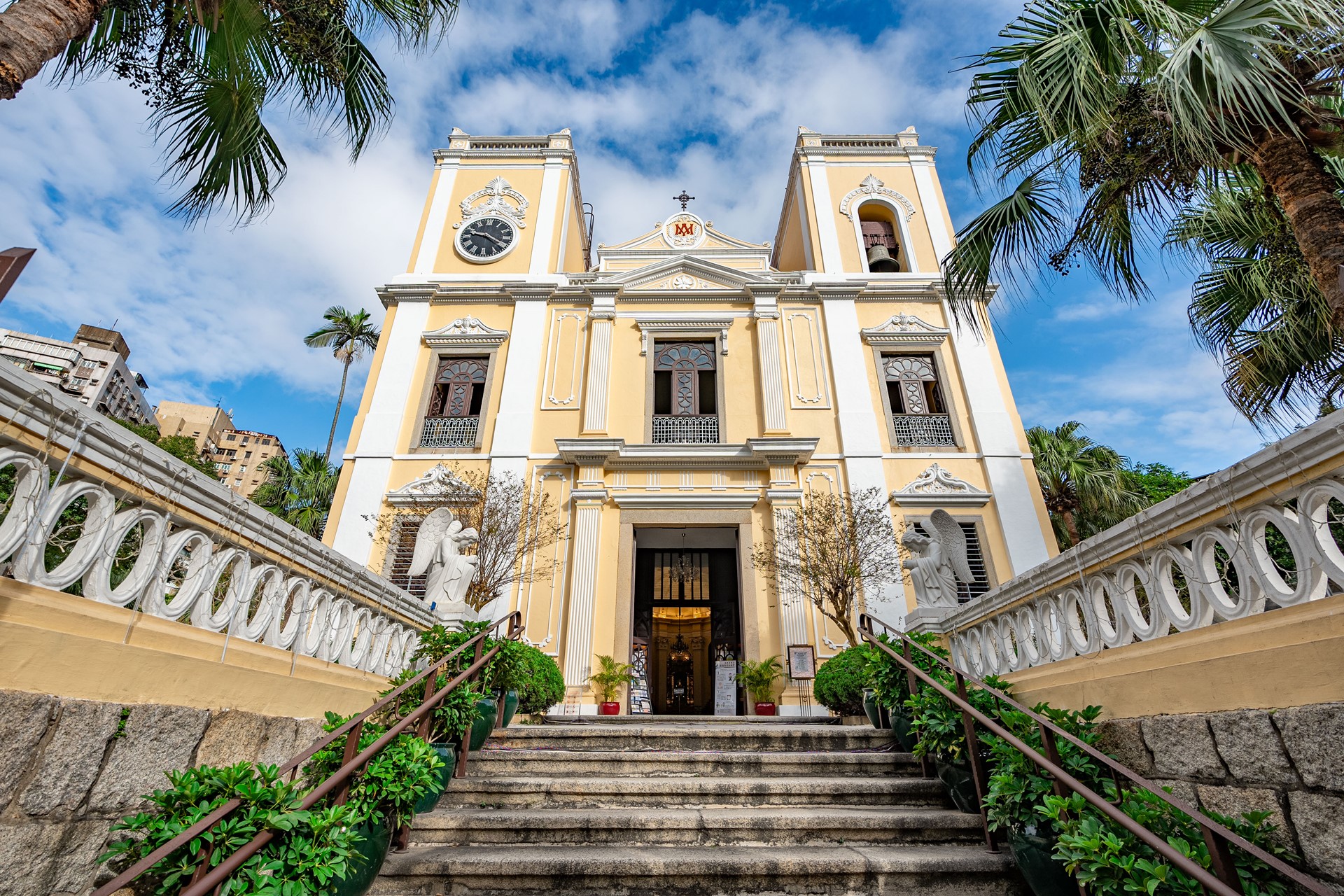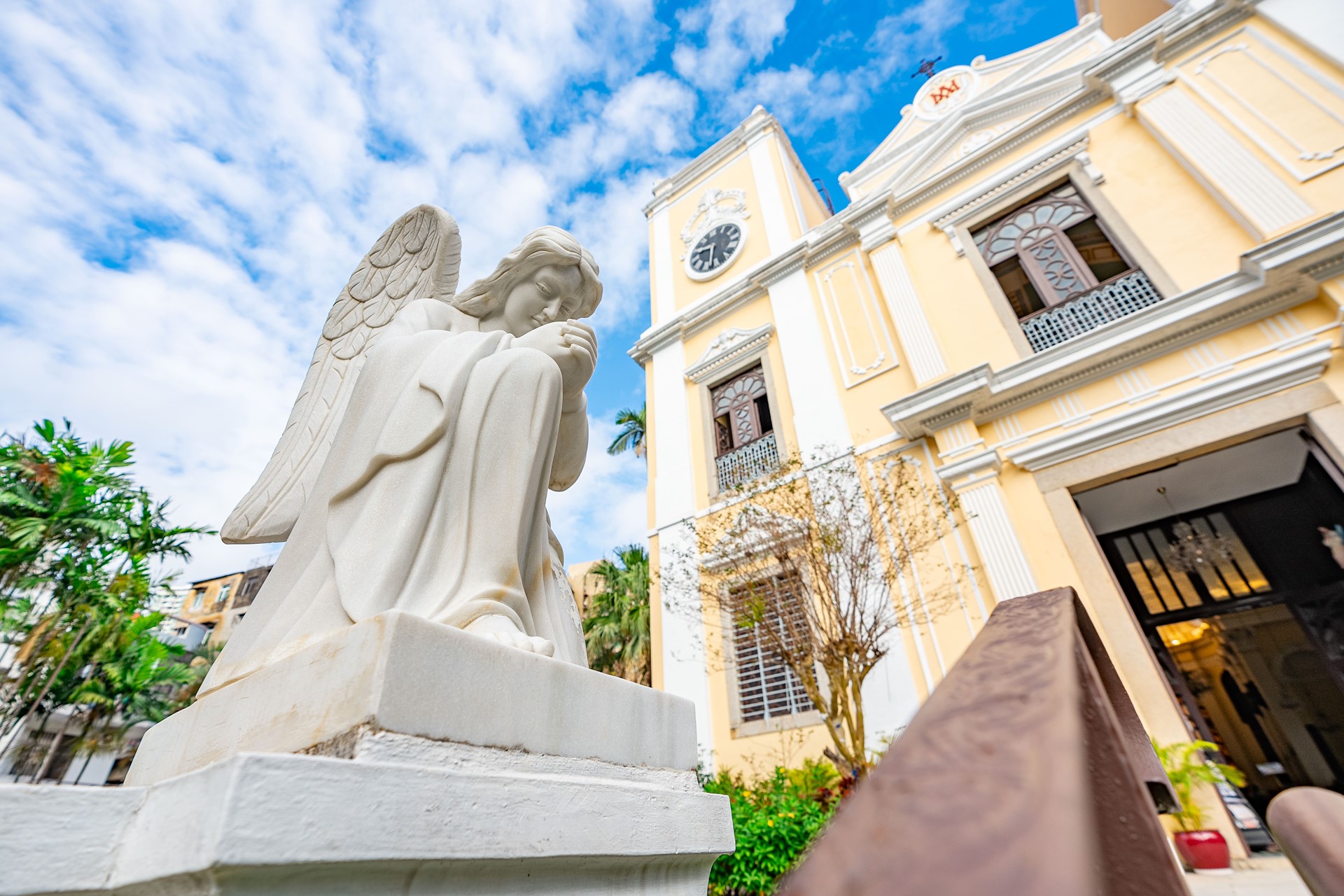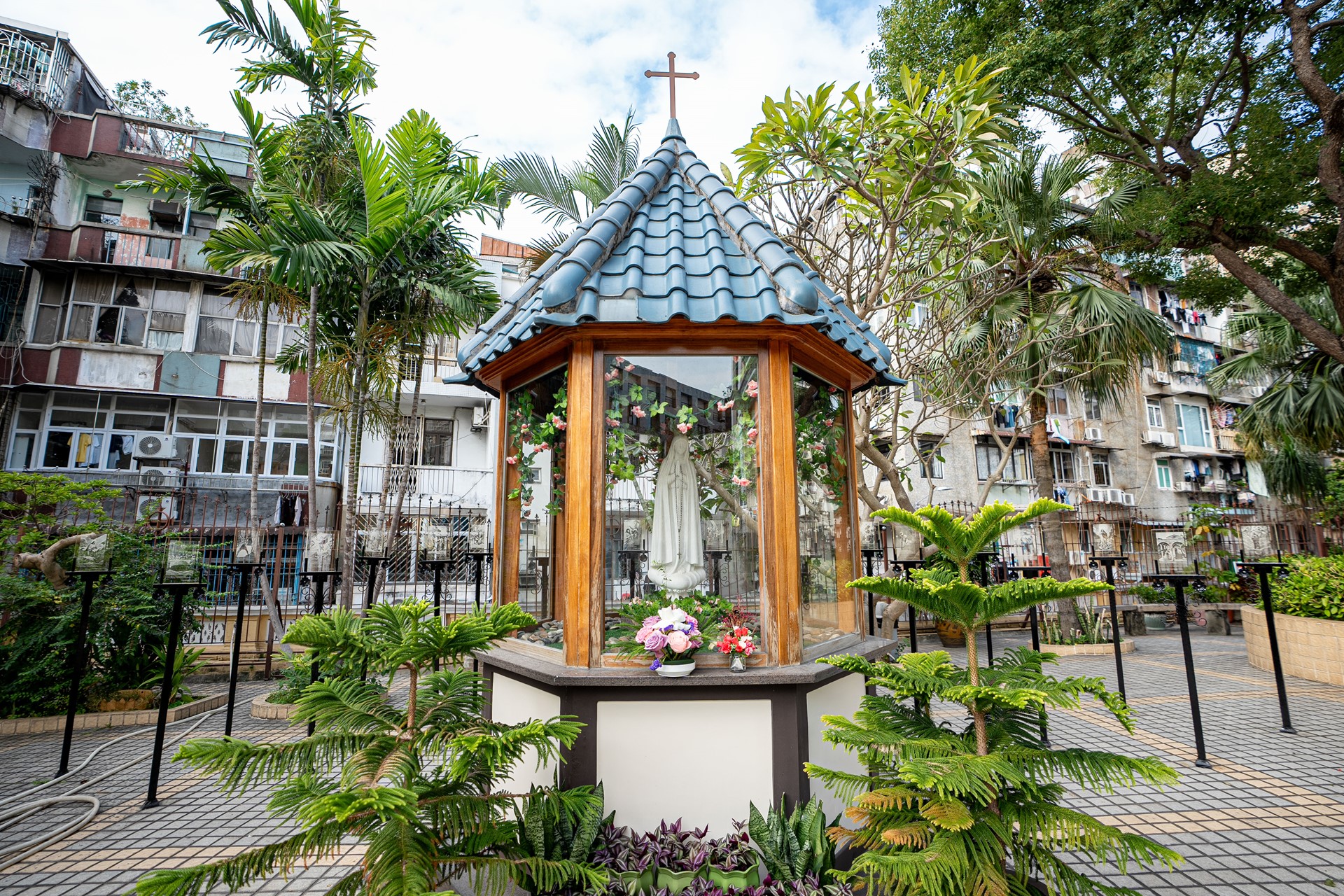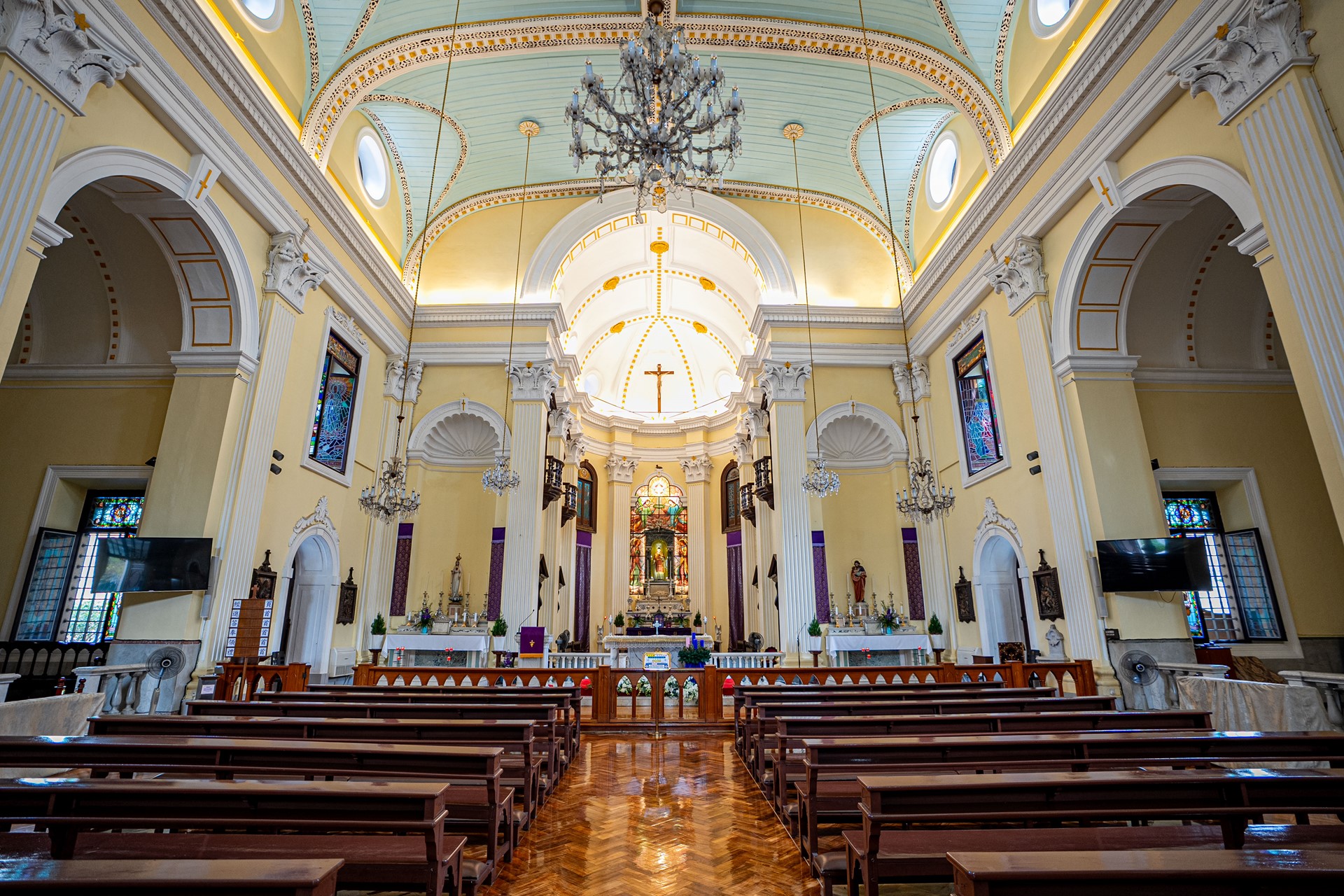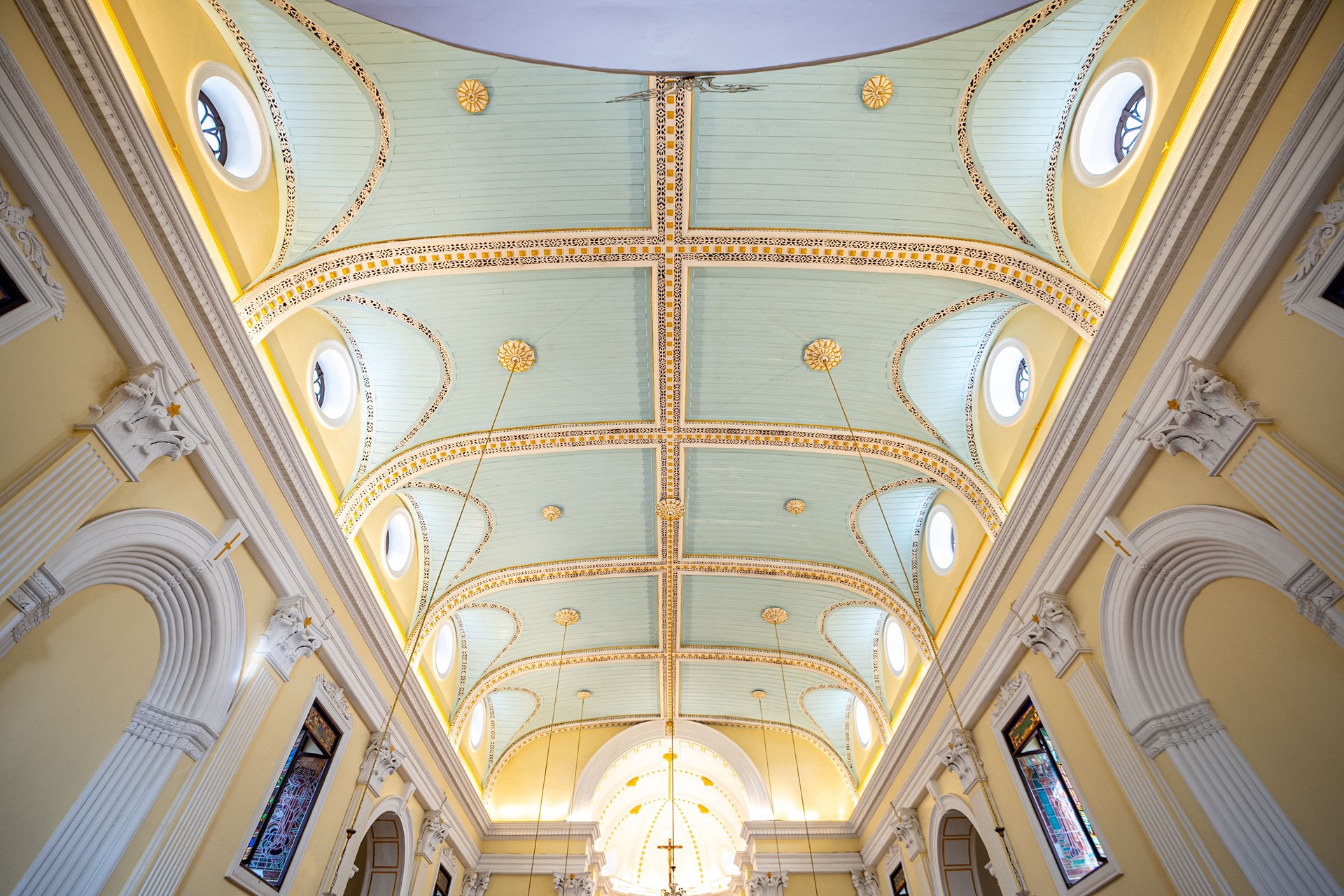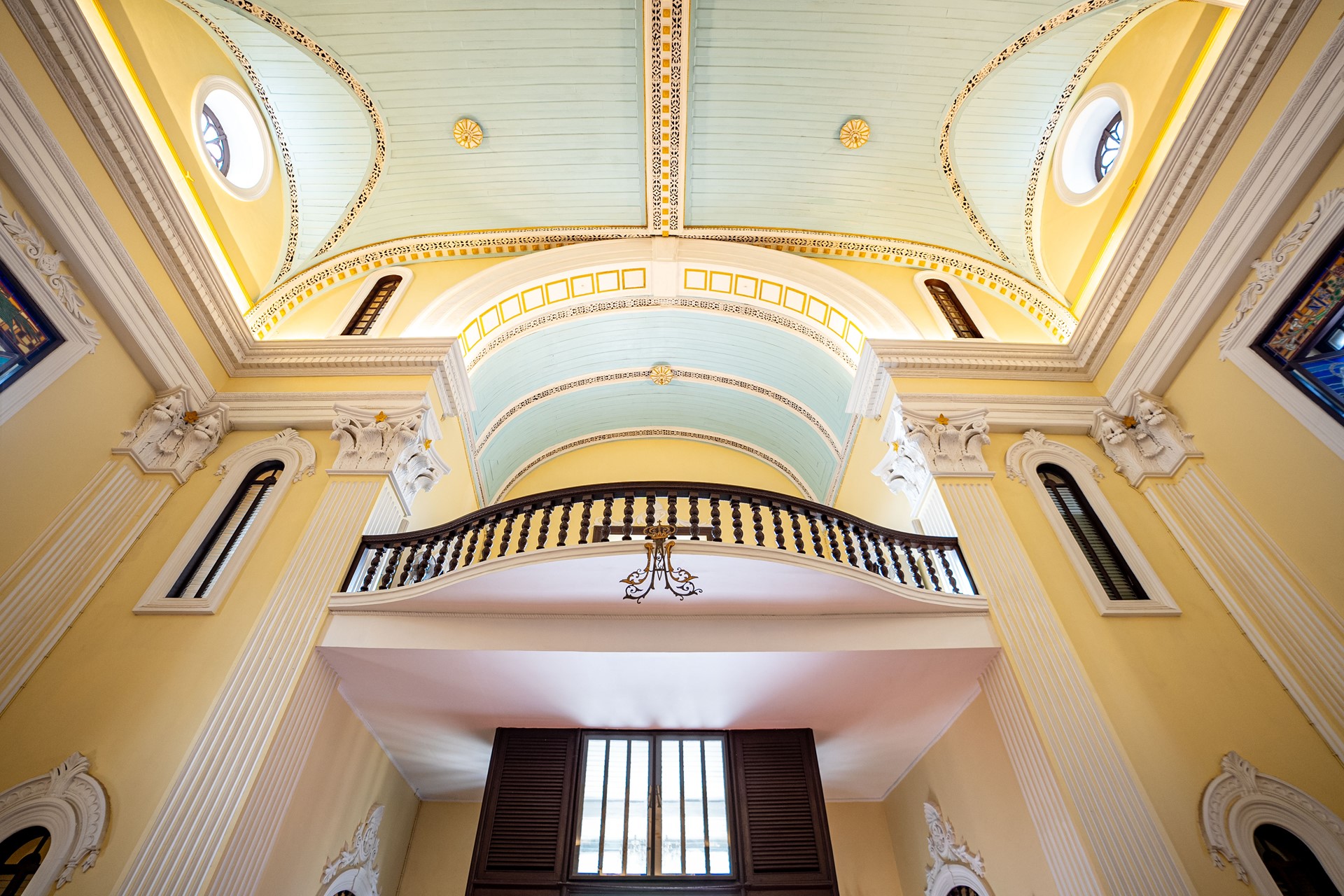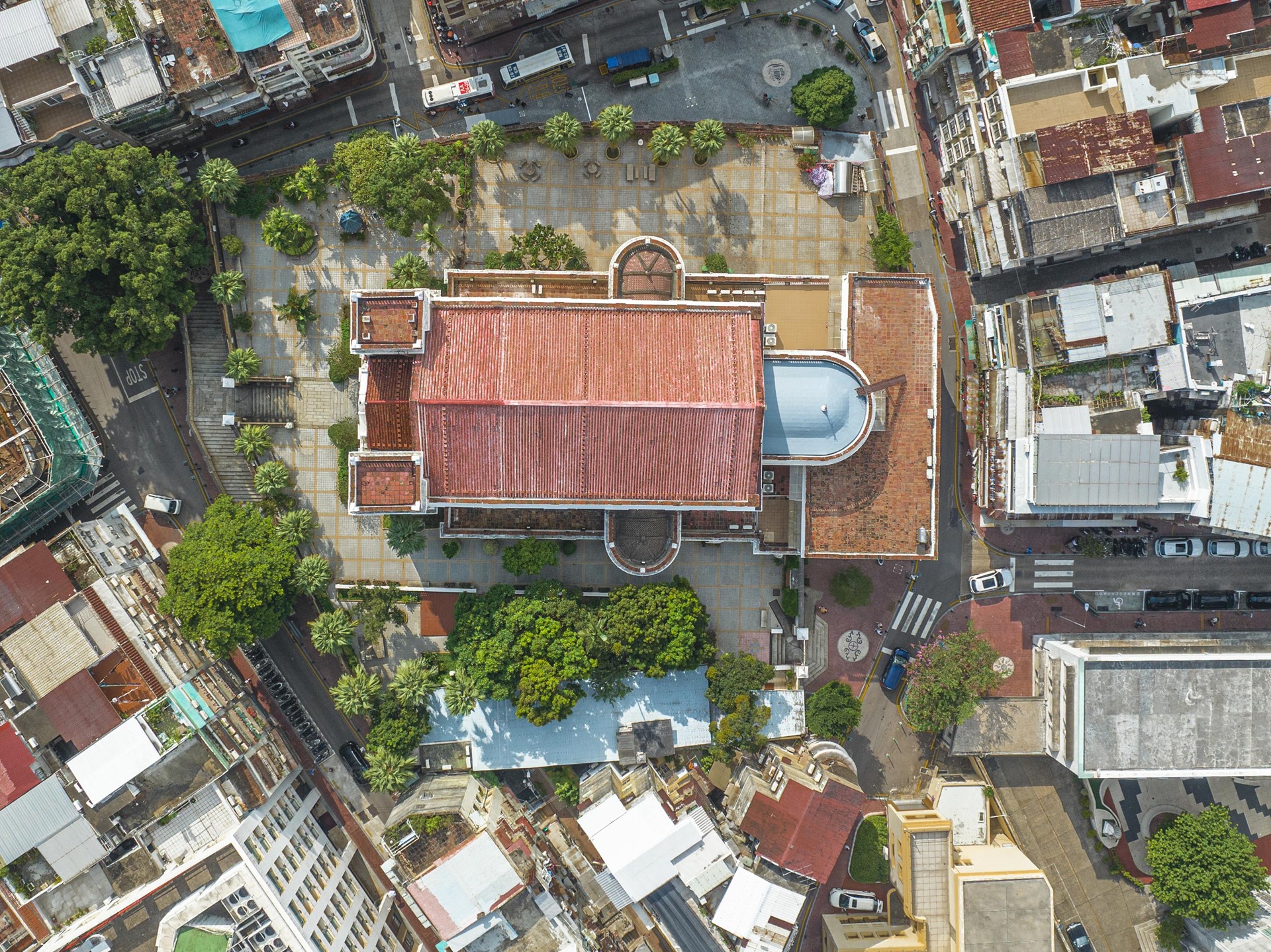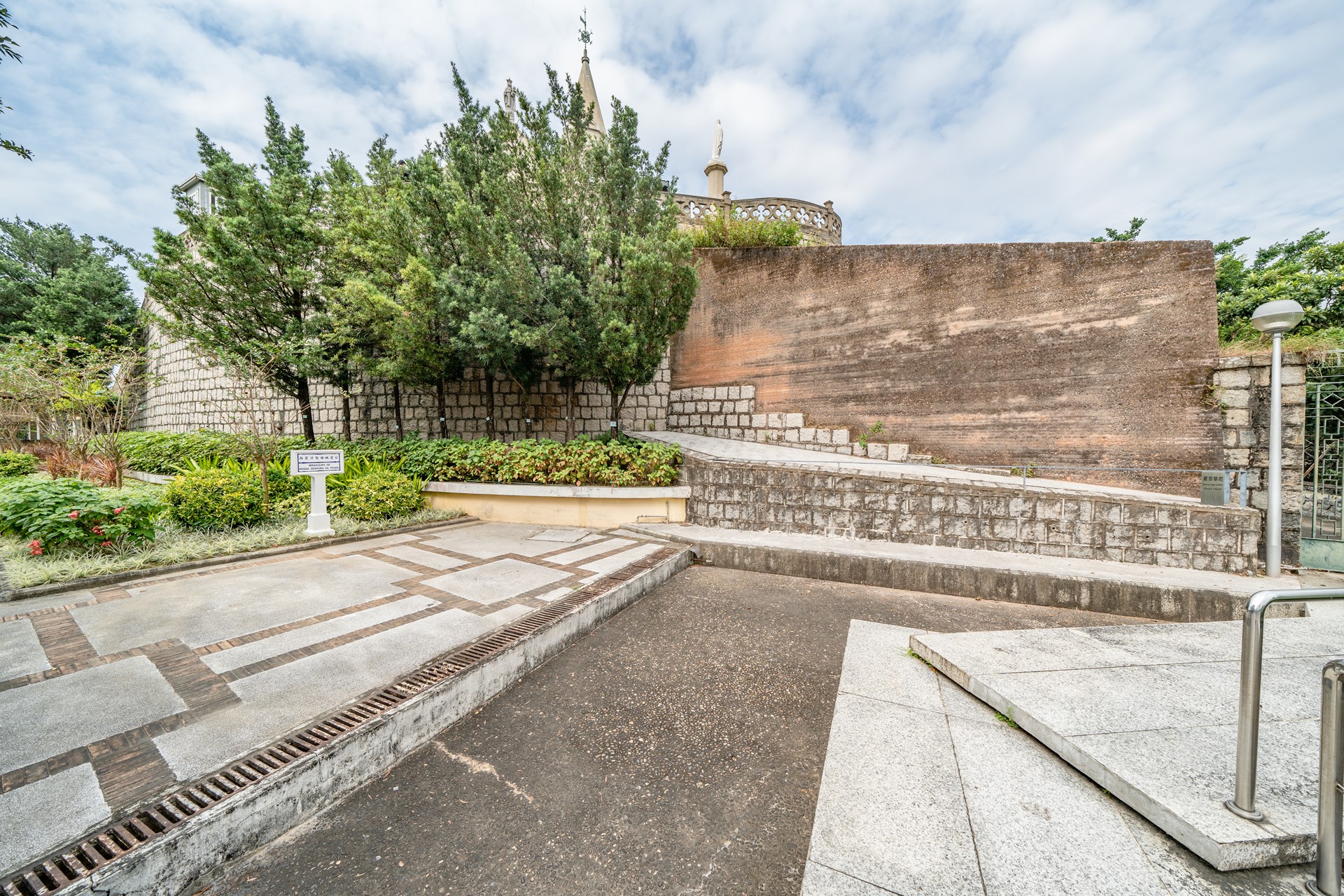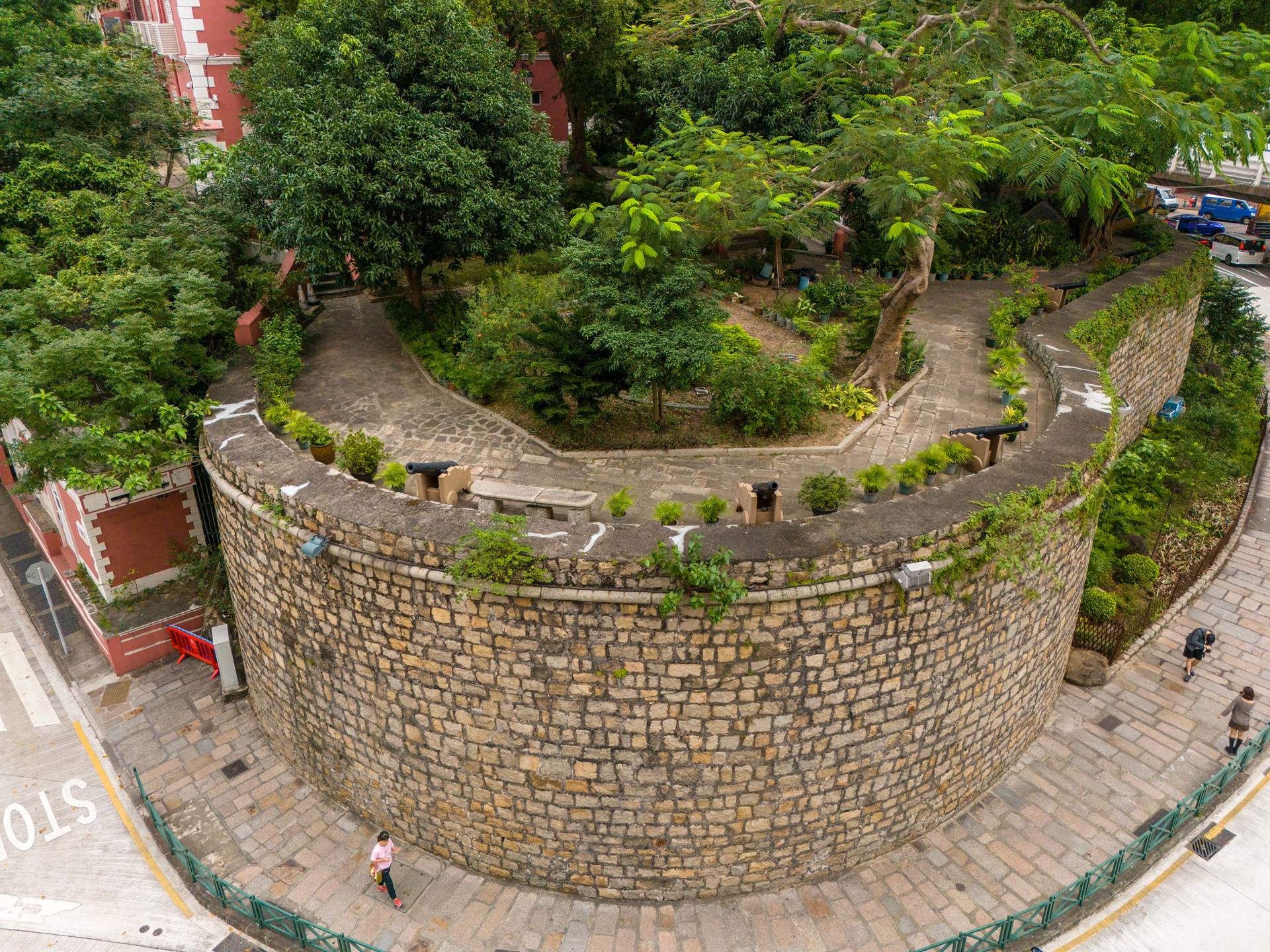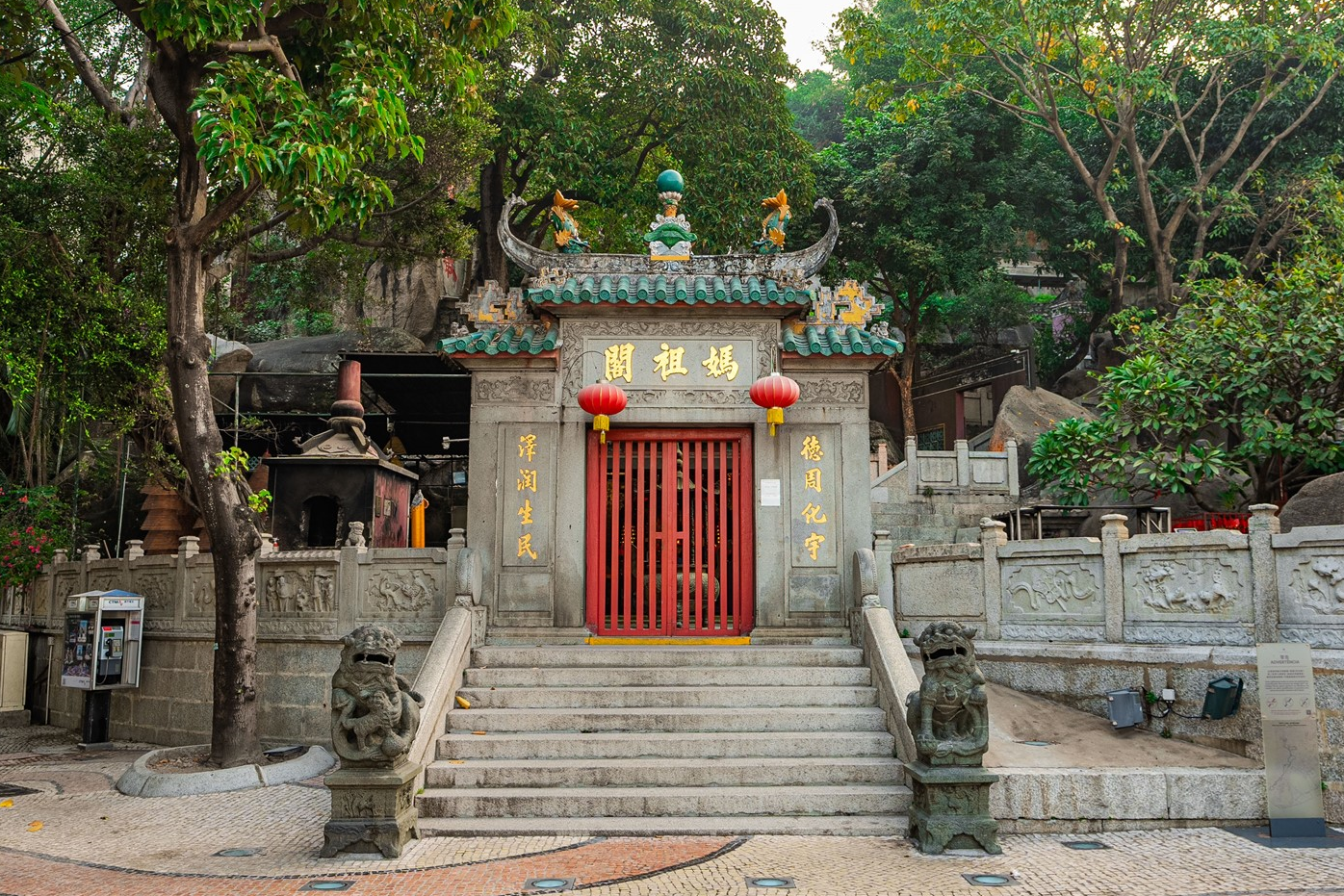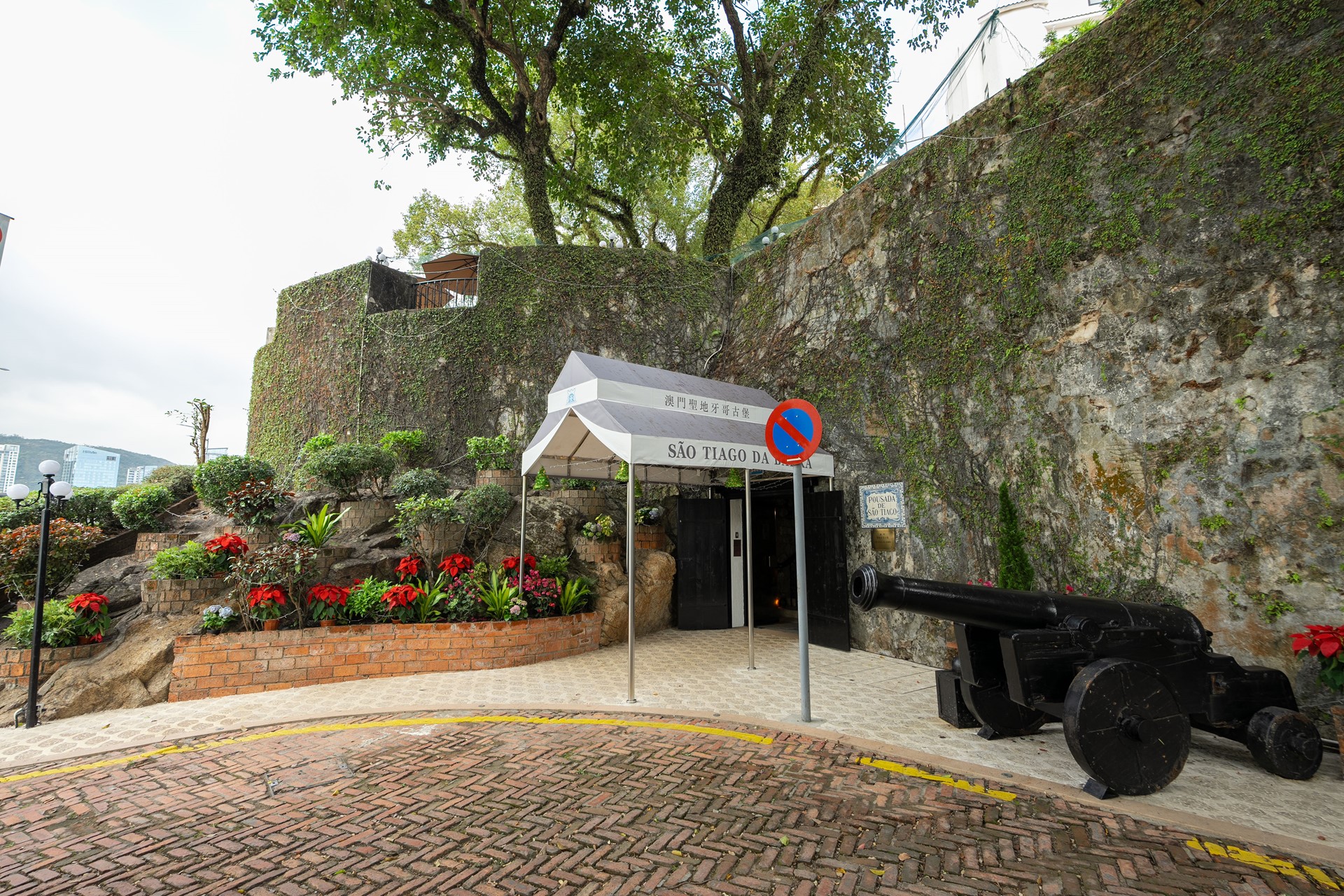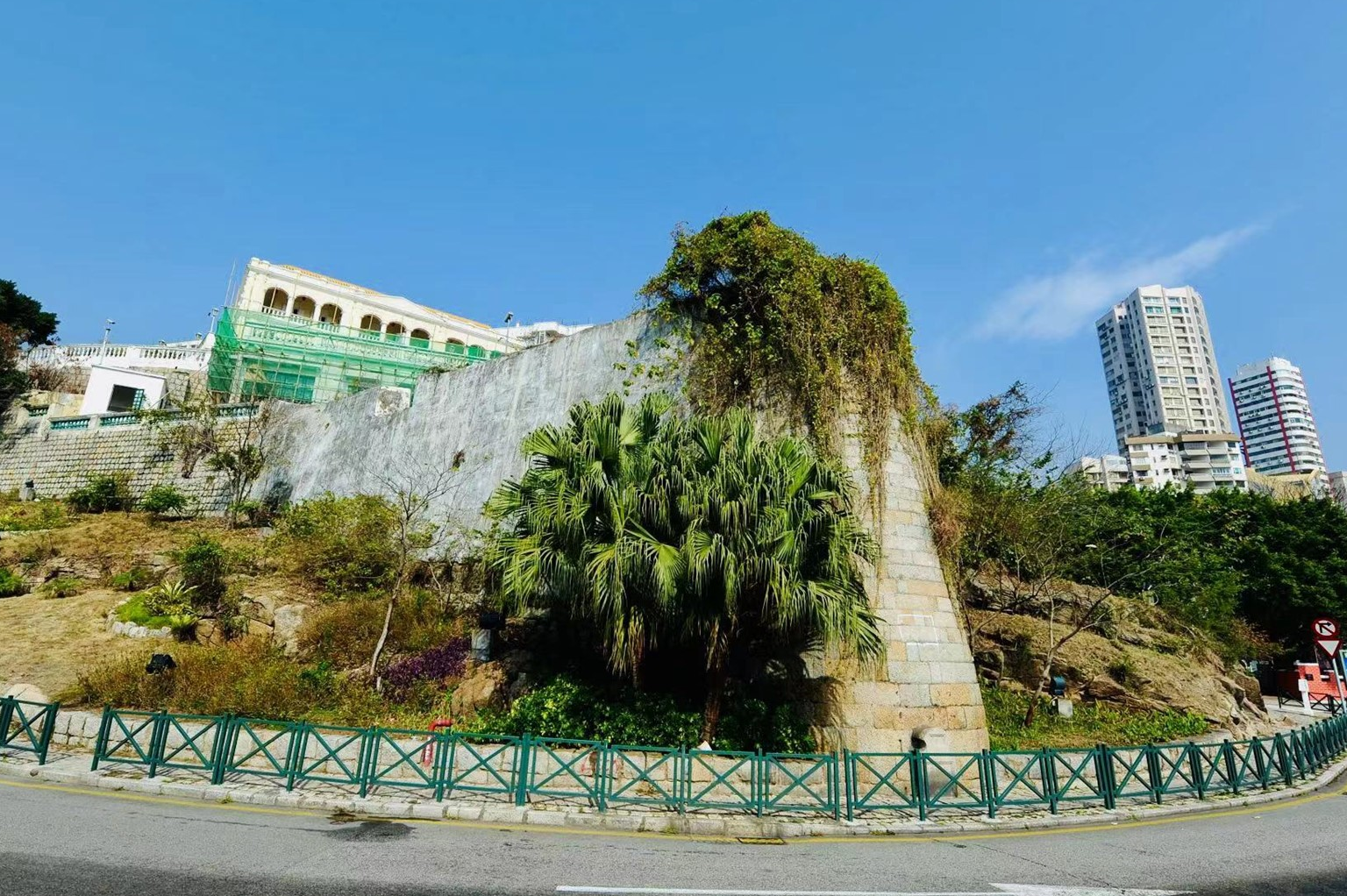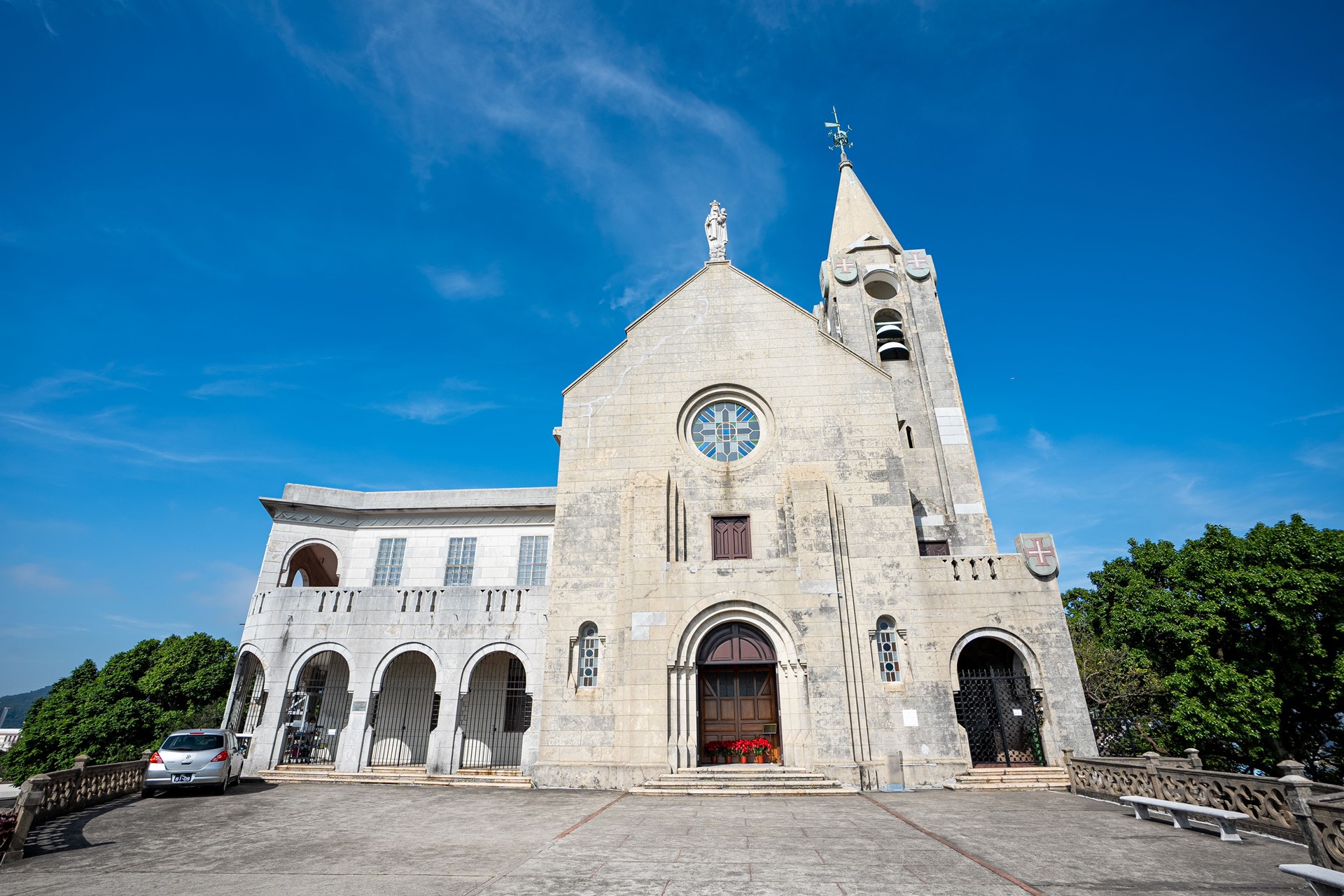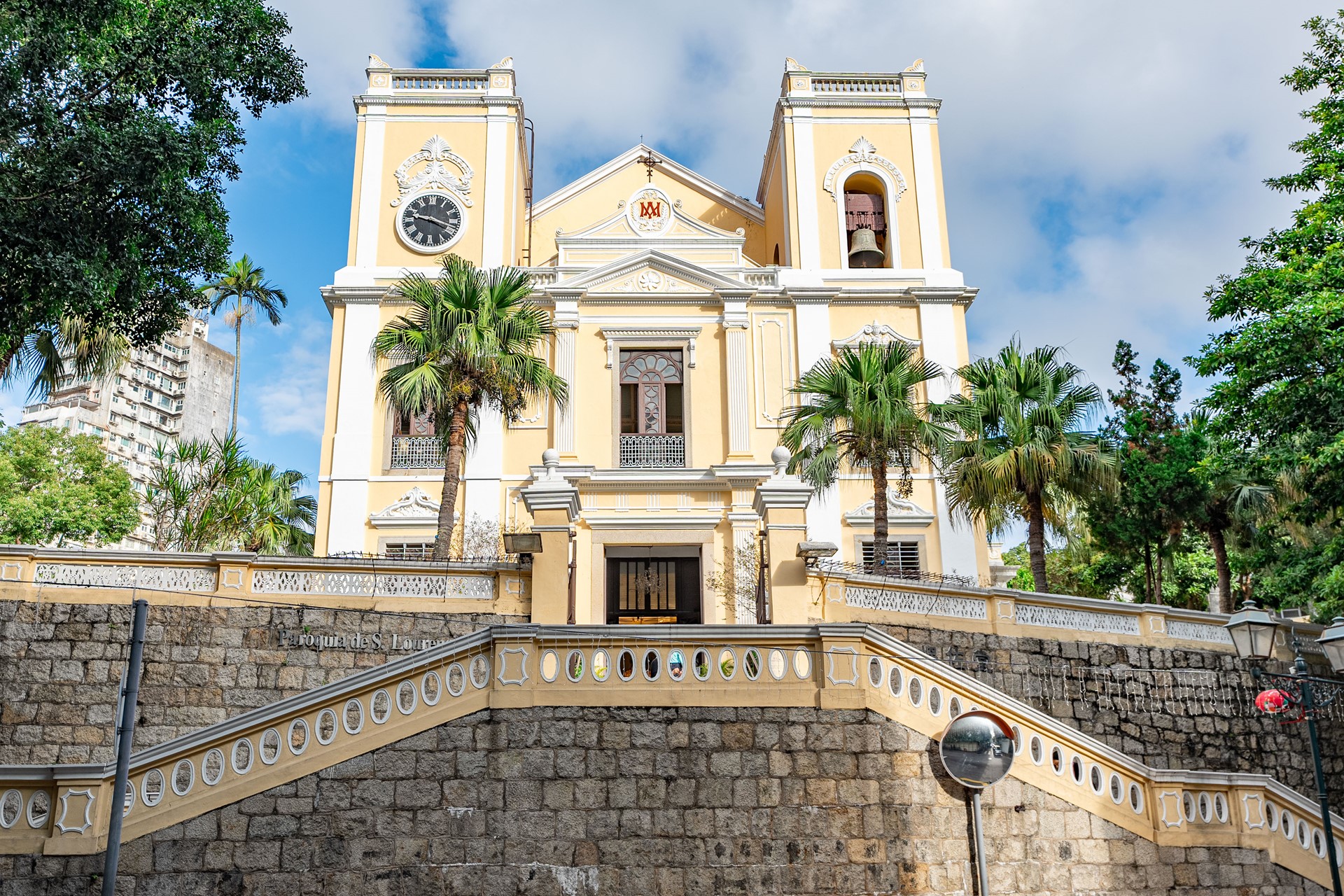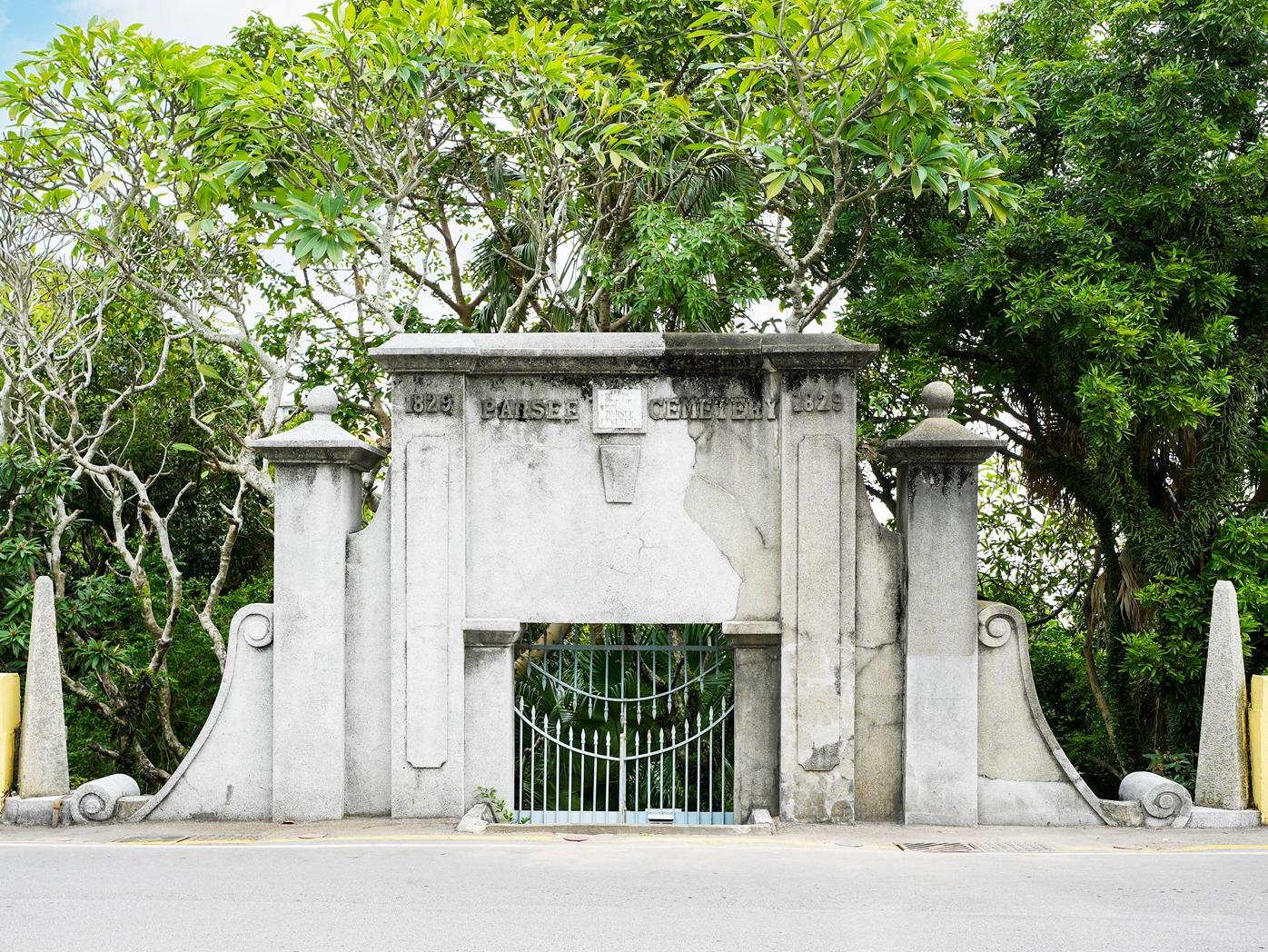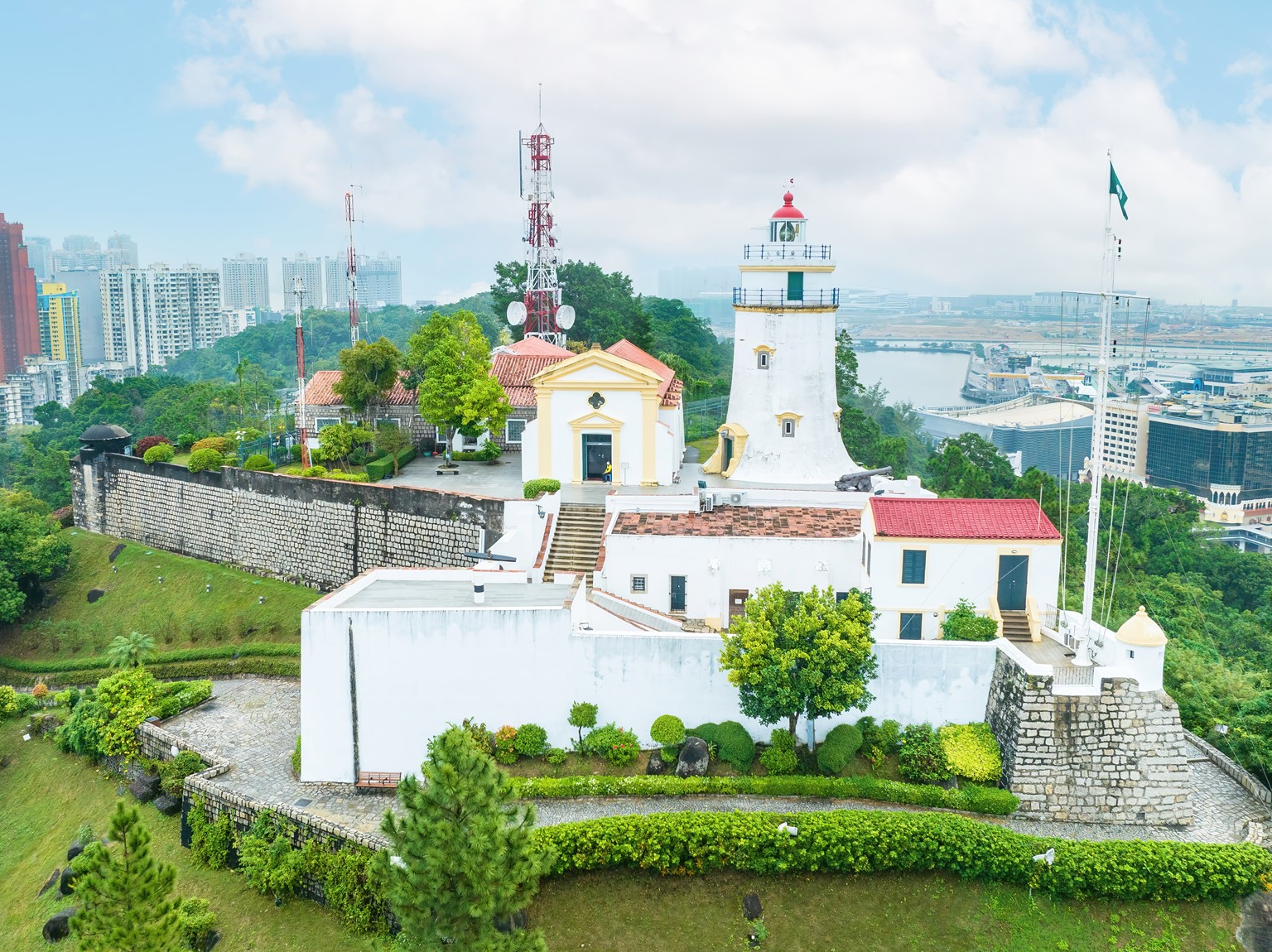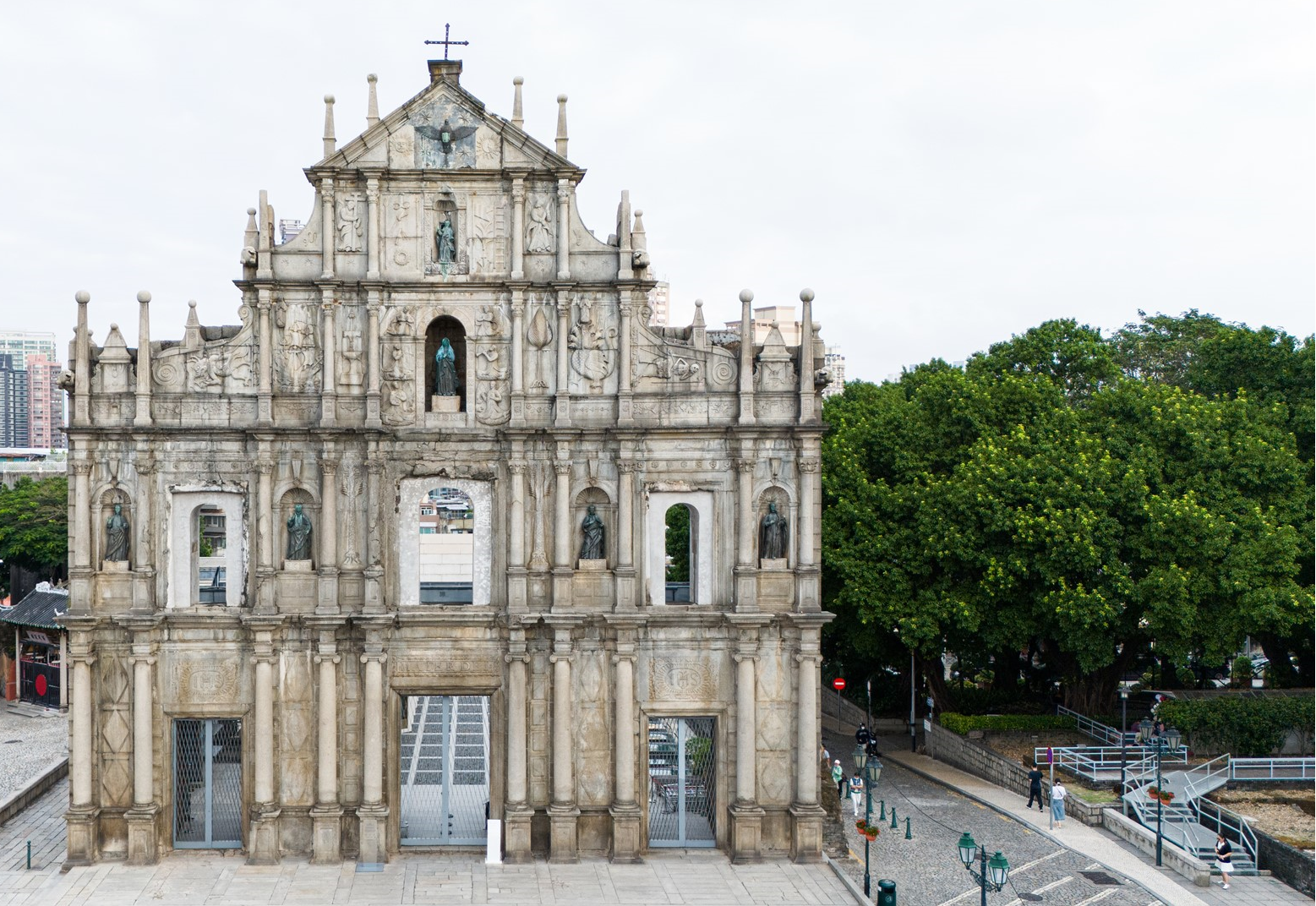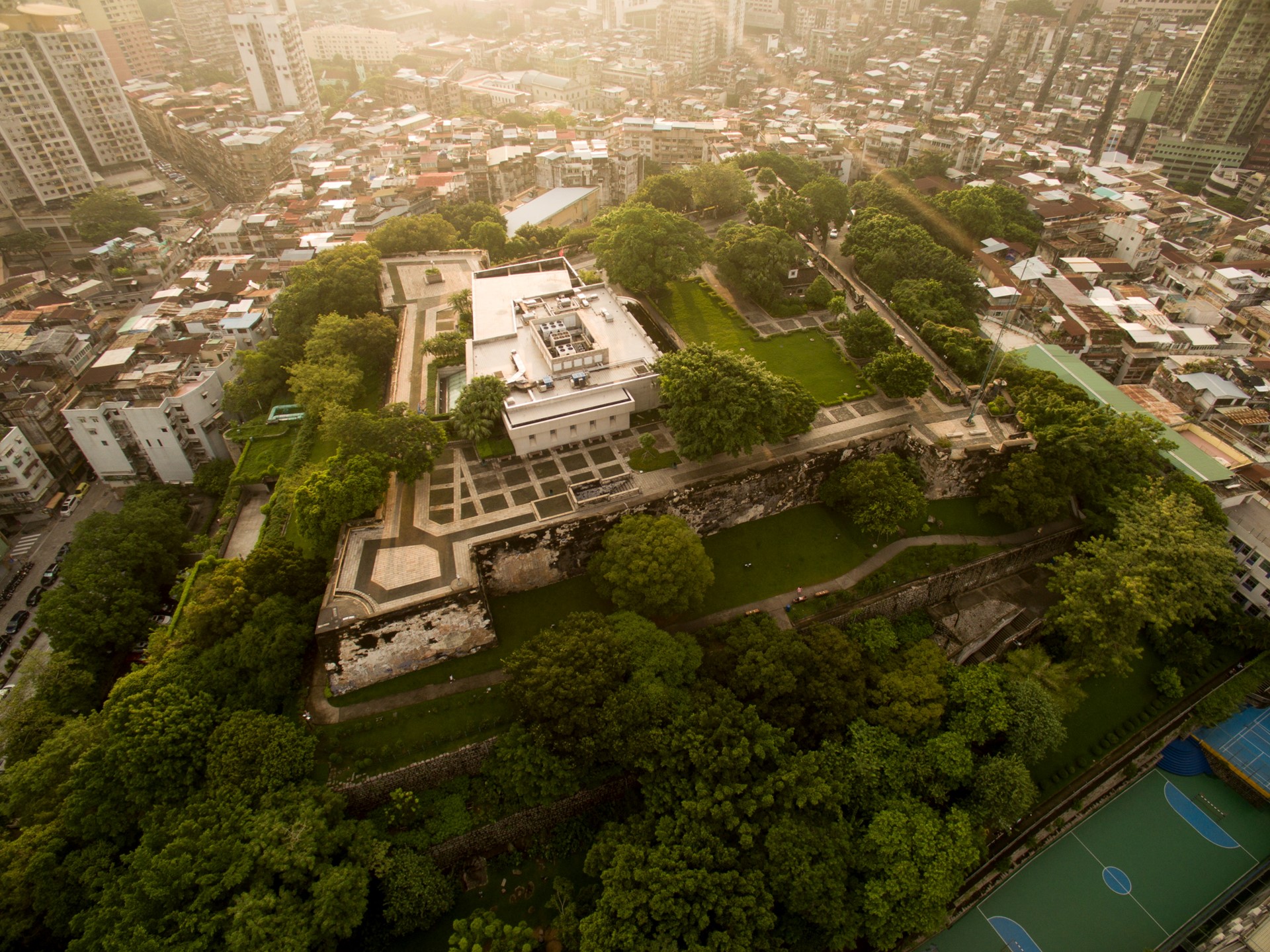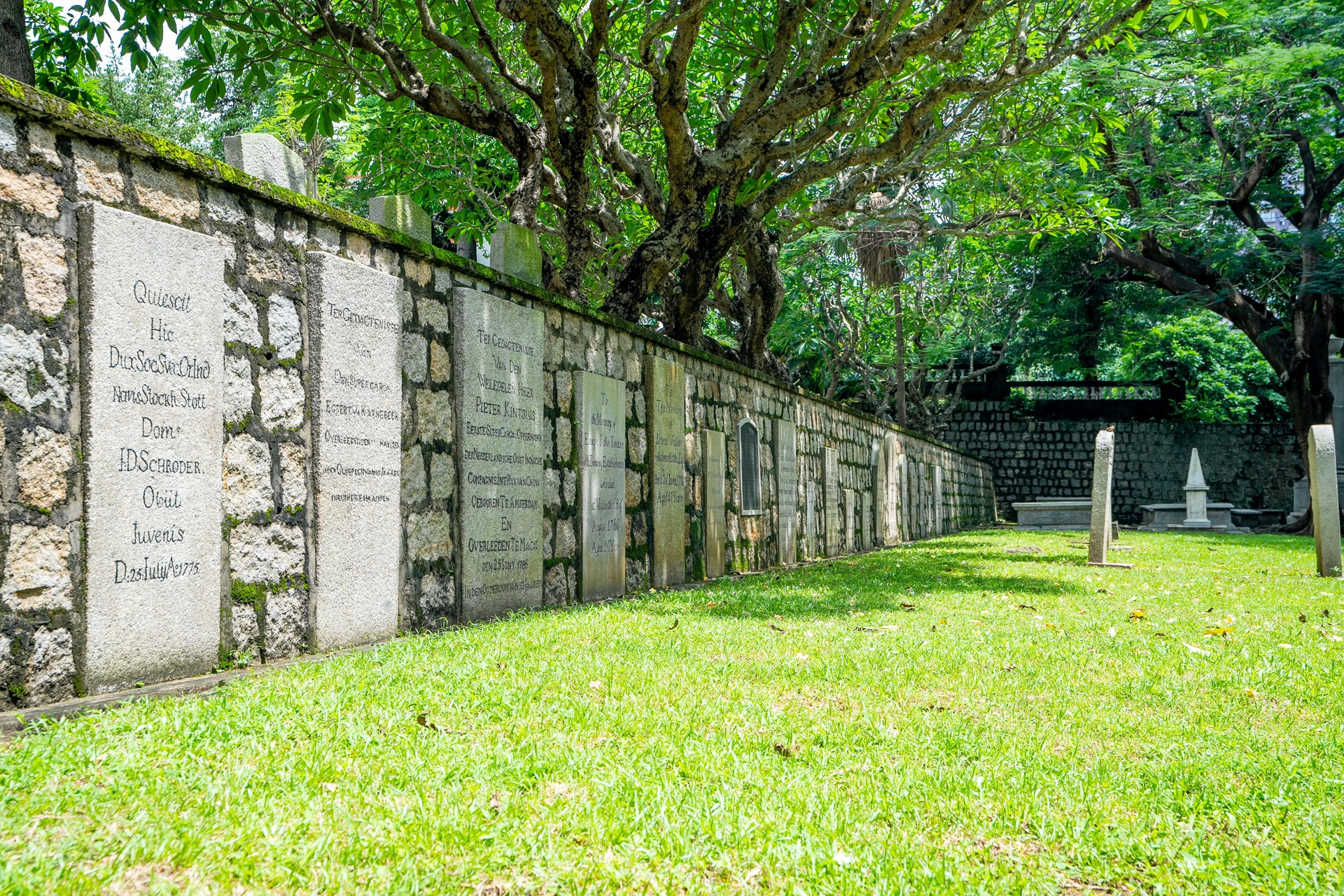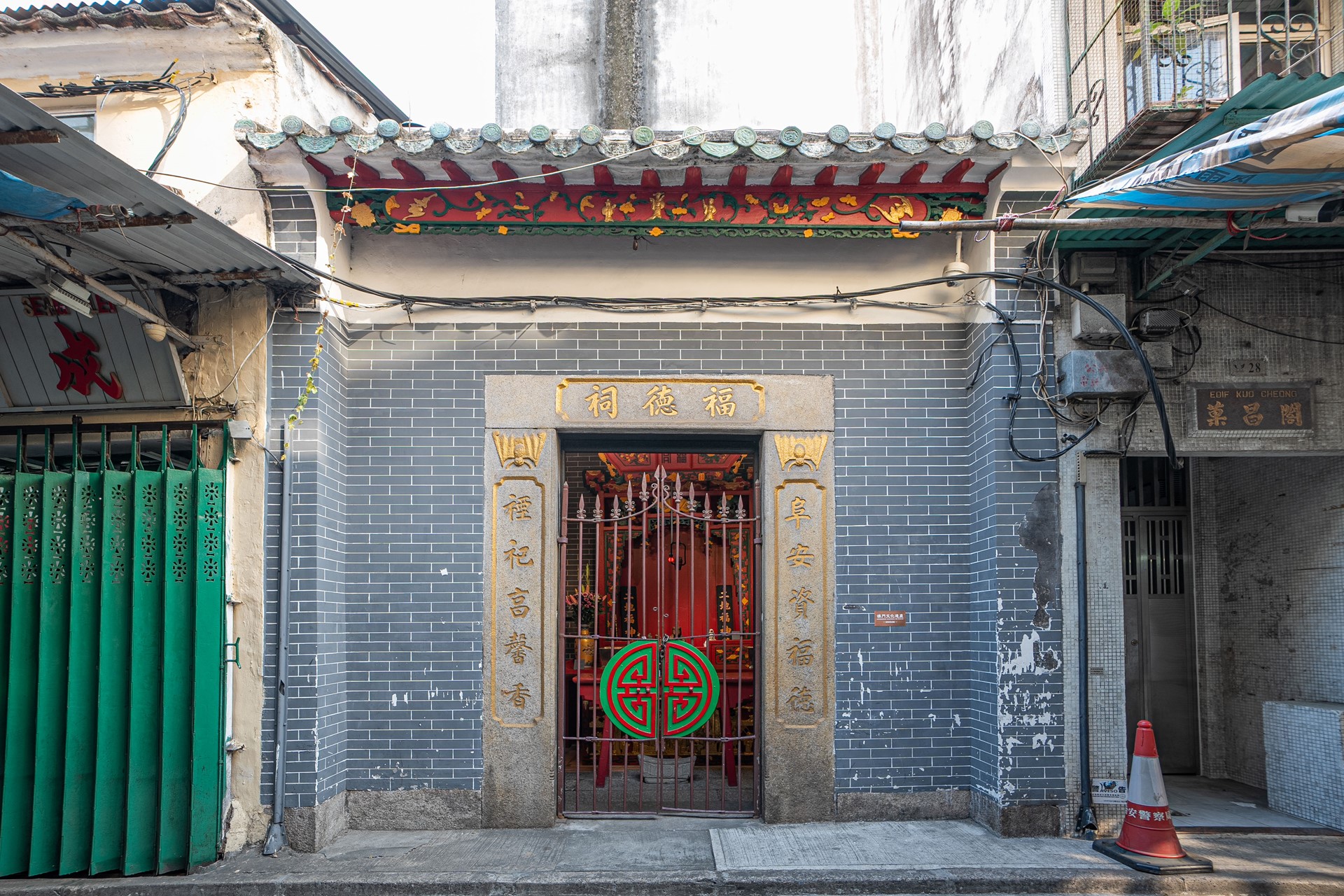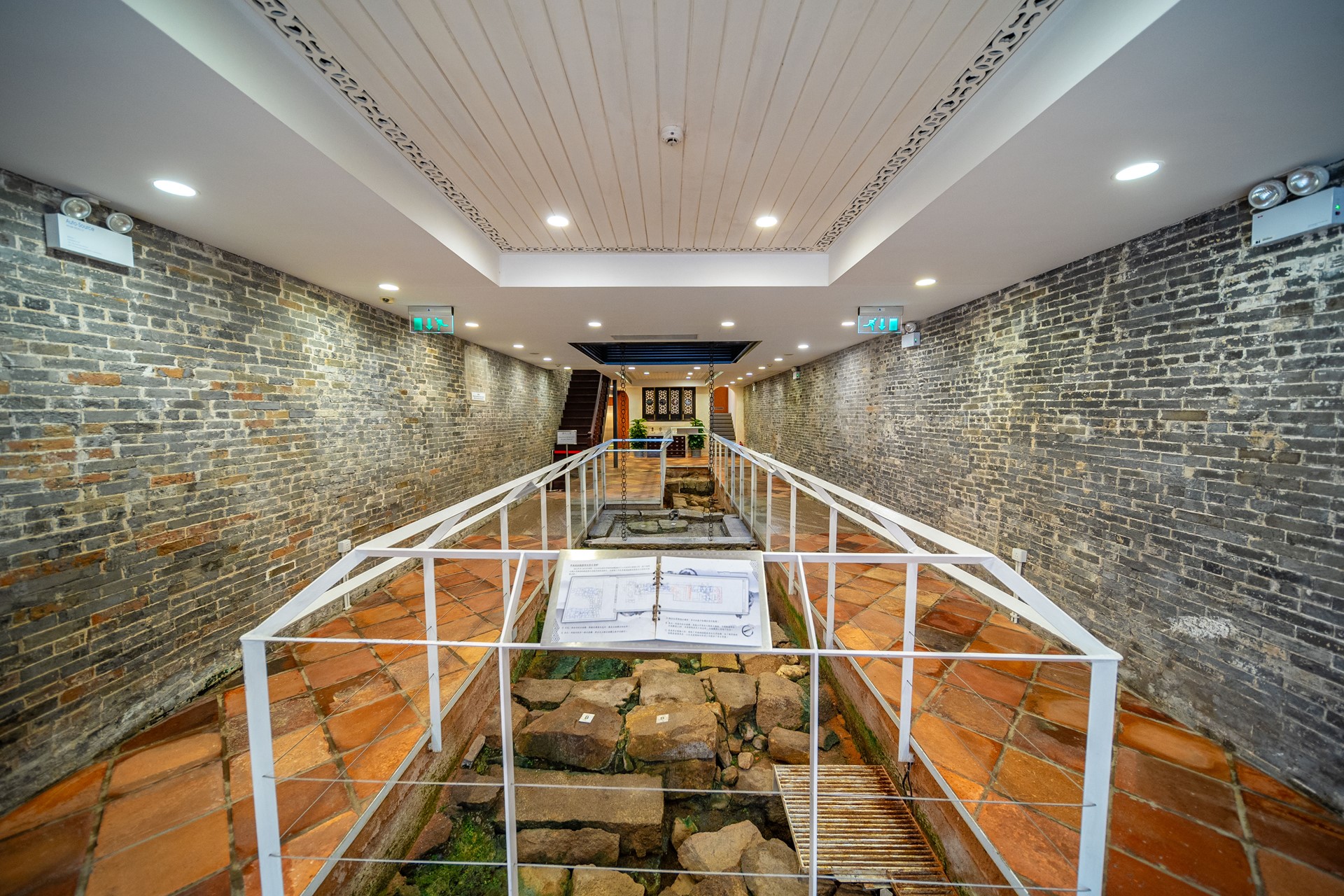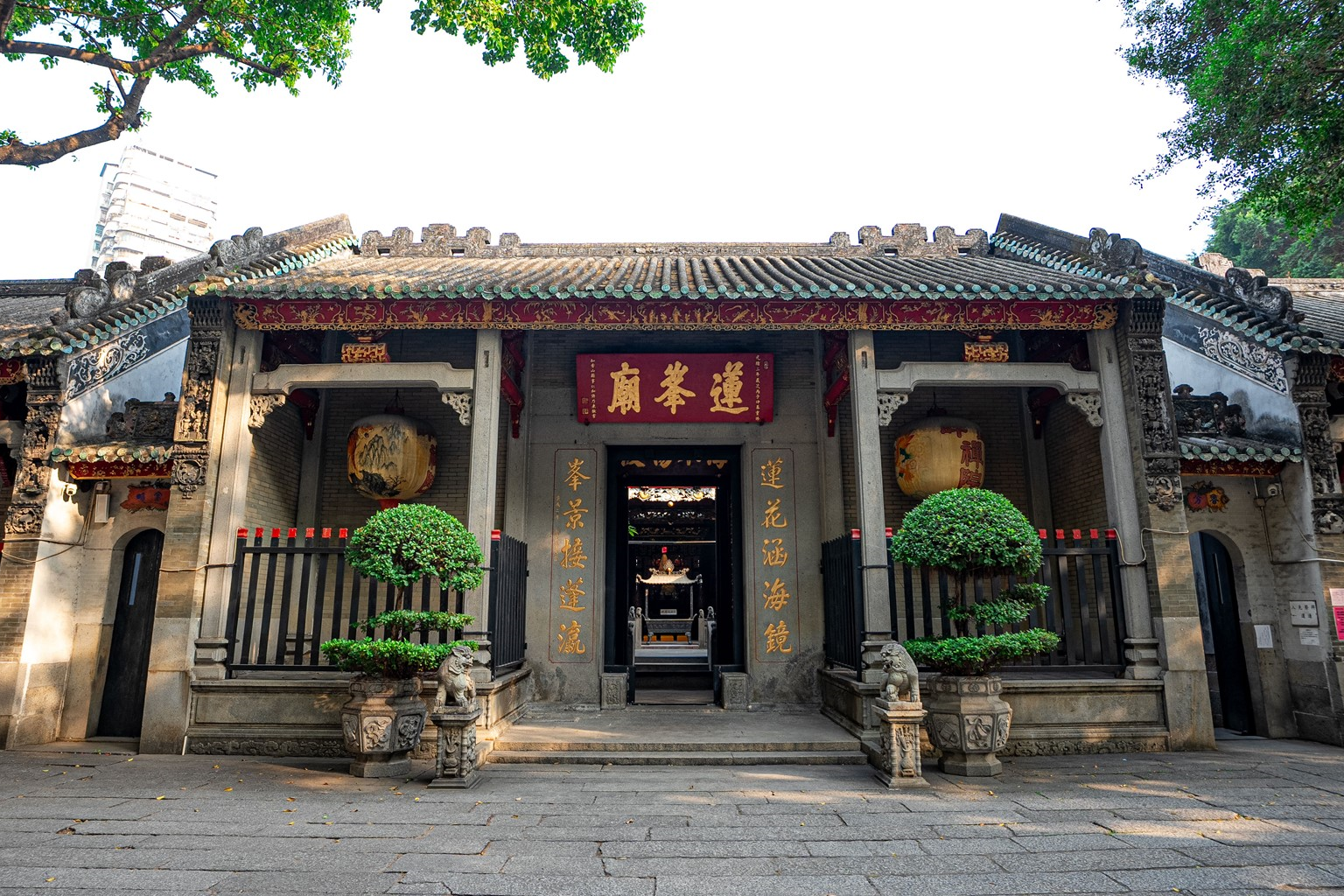St. Lawrence’s church is located on Rua de S. Lourenço, and has a pairing staircase at the entrance leading to the main gate. The church is three-stories in height and is symmetrically arranged, in neo-classical style. It was planned in the form of a Latin cross, with a nave that does not have any colonnades. There are two symmetrical towers , one with a clock and the other with a bronze bell that rings during masses. Honoring St. Lawrence as the patron saint, the church interior is spacious and majestic, with magnificent crystal chandeliers creating a luxurious ambience.
St. Lawrence’s Church, originally built as a small wooden structure, was built before 1560 and is one of the oldest churches in Macao. After being renovated in 1618, it gradually gained scale and the present-day shape and style are the result of the reconstruction that took place in 1846. Located on high ground with an open view, the church used to have a panoramic view of the entire coastline. It is said that many Portuguese used to gather here, to look afar, waiting for the return of ships and praying for the safe journey of their family members. That explains why the Chinese called it “Feng Shun Tong”, which means “Hall of the Calming Winds”, apparently inspired by trade and monsoon.
As the Portuguese settled in Macao, a community of devotees composed mostly by merchant seafaring families was gradually formed, and the church became an important landmark within the city. Strategically located on a hillside overlooking the coastline, in the old days St. Lawrence's Church used to be an important landmark in the skyline of the city, with a completely unobstructed panoramic view over the bay of Praia Grande. Due to its close connection with maritime activities, the Chinese called it “Fong Shun Tong”, a name that is still used to this day. The church, built during the prosperous era of Macao's maritime trade on an old commercial boulevard with wealthy merchants living nearby, not only bears witness to the way of life of the old merchants-sailors and their families in Macao, who were once active on the Maritime Silk Road, but also embodies the religious and cultural connotations of the city in the context of the Maritime Silk Road.
